|
WINTERGEWITTER
Bastogne italiana
Operation Winter Storm (German:
Unternehmen Wintergewitter), the small-scale German-Italian 1944 Christmas
offensive on the Apennine Mountains in Italy, was the last meaningful feat
of arms of the dying World War II Rome-Berlin Axis, and one of the last
examples of the German tactical and operational mastery. This offensive
badly mauled an American infantry division and achieved some minor results,
slightly and inconclusively improving the Axis situation over the Western
Apennines Gothic Line sector. From Wikipedia, the free encyclopedia
http://en.wikipedia.org/wiki/Operation_Wintergewitter_(Winter_Storm)_-_Italian_Front
|
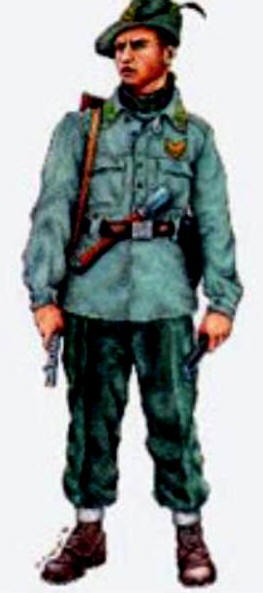 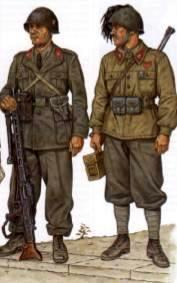
|
|
“Wintergewitter” ("temporale d’inverno
o Winter Storm"), scattò alla
mezzanotte del 25 dicembre 1944, con l’obiettivo iniziale di occupare la
valle del Serchio ed arrivare eventualmente a Lucca e Livorno.
Nonostante le pretese della propaganda fascista, che voleva far passare
l’operazione “WGW” come una sorta di controffensiva delle Ardenne
italiana, la battaglia fu di proporzioni quantomeno limitate, sia per i
risultati ottenuti (far ripiegare un gruppo di combattimento reggimentale
americano) sia per le dimensioni dei reparti impegnati (4 battaglioni
tedeschi e 4 repubblicani, più i supporti d’artiglieria per un totale di
poco superiore ai 5.ooo uomini ).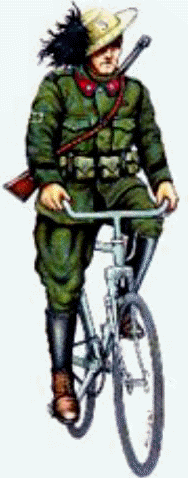 Entro il 31
dicembre il fronte si sarebbe nuovamente stabilizzato sulle posizioni di
partenza, senza alcun mutamento strategico o tattico di rilievo.
Entro il 31
dicembre il fronte si sarebbe nuovamente stabilizzato sulle posizioni di
partenza, senza alcun mutamento strategico o tattico di rilievo.
This article is licensed under the GNU Free
Documentation License. It uses material from the Wikipedia article "Operation
Wintergewitter (Winter Storm) - Italian Front". |
| Axis and American
Orders
Of
Battle (oob) |
|
Background and Preparations |
| Axis OOB -All’offensiva
parteciparono i seguenti reparti italo-tedeschi:
1a colonna
d’attacco:
-Battaglione Alpini Intra;
-Compagnia Comando Reggimentale del 1° Reggimento Alpini;
-Gruppo Esplorante Divisionale;
-II Battaglione del 6° Reggimento Fanteria di Marina;
-I Battaglione del 285° Grenadier Regiment;
direttrice d’attacco: Vergemoli-Calomini.
2a colonna d’attacco:
-Battaglione Alpini Brescia;
-II Battaglione del 285° Grenadier Regiment;
direttrice d’attacco: Treppignana-Castelvecchio.
3a colonna d’attacco:
-Battaglione da Montagna Mittenwald;
-Battaglione Mitraglieri Kesserling (aliquote);
-4° Battaglione da Montagna
direttrice d’attacco: Sommocolonia-Barga.
Artiglierie:
-1 gruppo da 150mm;
-3 gruppi da 105mm;
-1 gruppo contraereo da 88mm;
-2 gruppi da 75mm.
(Tratto da RID Rivista Italiana Difesa del
dic. 1994).
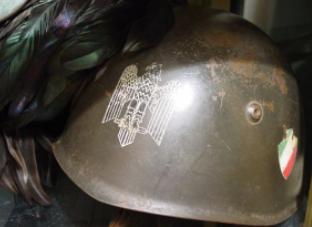 |
|
During an interview with General Mario Carloni, commander of the Italian
Monterosa Division (of the Italian Social Republic Army, or Republican
Army) on October 20th, 1944, the German General Jost, commander of the
42nd Jaeger Division deployed on the western sector of the Gothic Line,
touched upon the operational details of a plan under consideration by the
Kesselring staff as well as by Mussolini and the Italian Social Republic (RSI)
military leadership since early October.
The plan envisioned a strong offensive to be launched against the left
(western) wing of the American 5th Army, in the Garfagnana mountain region
(between Emilia and Tuscany), an all-out attack carried out by 40,000 men
- 2 Italian and 1 German Divisions - with lavish tank, artillery and air
support, aimed at breaking through the American lines and retaking Lucca,
Pisa and the strategically important port of Livorno (Leghorn), thereby
forcing the Allies to withdraw units from the central and eastern sectors
of the front and call off their offensive in the most critical
Ravenna-Bologna area. This was especially apparent in the 8th Army sector,
where the German defense benefited by a considerably less favorable
terrain.
Mussolini and Marshal Rodolfo Graziani, commander-in-chief of the RSI
Armed Forces, for obvious morale and propaganda reasons, warmly supported
the plan in this original, wide scope version. But when the operative plan
was sifted by the Fretter-Pico Group staff officers, it underwent major
changes, dictated by the bitter reality of the Axis local and overall
situation.
The "grand plan" was a dream. Of the three required divisions, one (the
"Italia" Bersaglieri Division) still had to arrive (only a coy available,
solo una compagnia disponibile),
just 50% of the Monterosa was available, and the German 148th Infantry
Division was in poor shape. There were neither tanks, nor aircraft, nor
fuel; only a few extra German artillery batteries were assigned (niente
carri, nessuna copertura aerea, niente benzina). Moreover,
any attempt to move armored units to the area, or to substantially
strengthen the infantry divisions already deployed, would have been
quickly found out by Allied reconnaissance and partisan spies, and
tactical and operational surprises could never have been achieved (not to
mention the fact that the Allied air forces would have quickly made
mincemeat of those reinforcements).
Generals Carloni and Otto Fretter-Pico (commander, 148th Infantry Division)
radically modified the plan and proposed a limited local attack on a
narrow front, which the scanty Gothic Line forces could have launched
without resorting to unlikely reinforcements. The offensive was to improve
the Axis defensive positions in Garfagnana; pin American forces down in a
secondary zone; prevent them from being shifted to more vital areas;
capture weapons, foodstuff, ammunition and materials; boost the Republican
morale.
The revised plan was accepted. The attack would invest the American front
line between the town of Sommocolonia (east of Serchio river) and Mount
Pania Secca (west of the said river), 20 kilometers as the crow flies.
While Gen. Fretter-Pico would be the overall commander, Gen. Carloni would
lead the attack operationally.
4,600 men (Monterosa and 148th Divisions plus attached units) were split
up into three attack columns.
The situation prior to the outbreak of Winter Storm
Axis HQs did their best in trying to conceal troops and artillery
movements and to muddle the enemy, also by purposely propagating rumors
about a possible Axis offensive in the Serchio valley. They knew that the
partisan spies and the Allied intelligence sooner or later would get to
know about their plans, and spread false alarms. Vague information reached
the US IV Corps and 92nd Infantry Division (the black "Buffalo" Division),
the American unit holding the Sommocolonia - Pania Secca line. An attack
was expected on or about December 10th : new trenches, fieldworks, barbed
wire entanglements, strongpoints and minefields strengthened the defenses.
However, it so happened that the IV Corps had also planned a Christmas
attack, which should start on December 25th, 08:00 hours. As on December
10th nothing happened, the 92nd Division commander (Gen. Edward M. Almond)
ordered his troops to make ready an attack, while at the same time keeping
a look-out for possible Axis actions. This ambiguous directive engendered
confusion among 92nd Division's officers and troops, and was one of the
causes of their defeat. |
|
http://comandosupremo.com/winter.html |
|
The Attack |
The best, most experienced units, no doubt, were the two German assault
battalions of the 3rd column, attached to the 148th Division, and called
"special battalions" in Italian sources. They were entirely made up by
well trained and fast-moving assault troops. The two weak, understrength
German battalions of the 285th Grenadier Regiment instead were of poor
quality. Most of their men came from Alsace, and had been forcibly
enlisted in the Wehrmacht after the 1940 campaign and the German
annexation of their native land. Desertion rate was high and on November
26th - 27th an Italian Alpine company joined them to have them toe the
line.
The first attack column would operate on the right of the Axis array,
carrying out diversionary attacks and taking the American first line and
the towns of Vergemoli and Calomini. The second, central column (left and
right of Serchio river) would break through the American defenses and
would head for the rear area towns of Gallicano, Treppignana and Fornaci
di Barga.
The 1,500-strong third column, on the left, was the pivotal one. It would
start first, penetrating the US line, outflanking it, quickly seizing the
town of Sommocolonia and making for Barga - Fornaci di Barga - Pian di
Coreglia (8 km south of the start line). |
|
On December 24th, 92nd Division was ordered to call the scheduled attack
off and prepare to fend off an Axis offensive which would be launched on
December 27th. But the Axis third attack column was ready to go at
midnight, December 25th - 26th!
At 04:50 (3:00 according to some sources) hours, December 26th, elements
of the two German assault battalions, coming out from darkness, suddenly
attacked the Sommocolonia garrison (elements of F Company, 2nd Battalion,
366th Regiment, supported by some partisans). Some authors state that the
resistance there was tough but quickly overwhelmed; others say that it
lasted all day and the attackers were even forced to call for artillery
support. The latter account sounds more credible. When finally the town
was completely occupied by the Germans, only 18 defenders managed to
disengage and withdraw.
In the morning, 200 men of the Mittenwald battalion seized the American
positions at Bebbio and Scarpello, villages placed south of Sommocolonia
and held by the 92nd Recon Troop, which withdrew to Coreglia.
At 14:00 hours, the German spearheads attacked Barga, and its garrison,
the 2nd Battalion, 366th Regiment. Here, too, the defenders put up a good
fight and the garrison succumbed to the German onrush by the following
morning.
In the meantime, Axis mortars had opened fire along the whole front and
the other two columns had started moving forward. The center column in the
Serchio valley - east of Serchio river, the two German Grenadier
battalions together with the attached company of the Italian Brescia
Alpine battalion; west of the same river, the other Brescia companies -
overcame a weak initial resistance, but their opponents were falling back
already and the attackers got to Fornaci smoothly, almost without a fight.
Fornaci itself fell quickly, although the two German (in fact mostly
Alsatian) battalions were heavily criticized for their sluggishness and
lack of aggressiveness.
The all-Italian right column, however, faced a much more vigorous defense.
The San Marco easily seized the village of Molazzano and pushed the
defenders back, but the Regimental Headquarters Company suffered losses
and could not take the village of Brucciano. The Cadelo Group, supported
by the Intra battalion which was engaging the enemy by launching little
diversionary attacks, occupied Calomini, but the Vergemoli garrison -
370th Infantry Regiment elements, and some partisan groups - proved a
tough nut to crack and could not be dislodged. A wide minefield, artillery
shelling and deadly machinegun and rifle fire stopped the advancing
Italian platoons and inflicted heavy casualties, in spite of a relentless
Axis artillery barrage fire hammering the American positions. In the
evening of December 26th, the town still was in American hands, but the
Cadelo broke off its attacks because the whole US line had elsewhere
crumbled. The stout Vergemoli garrison could be encircled and cut off. It
eventually retreated, leaving in place a partisan group as a covering
party.
By December 27th, the mini-offensive was over. In the morning, the German
assault troops entered Pian di Coreglia, their final objective, and
patrols went forward as far as the relatively distant village of Calavorno,
reporting that the enemy still was in full retreat. The other columns had
also reached their objective points, and an entire Allied Division had
been routed. Nearly 200 prisoners were taken, along with many weapons (including
several Browning M2HB heavy machineguns, mortars and some bazookas),
foodstuff and assorted materials. Axis attack forces had wedged themselves
into an area 20 km wide, 8 km deep.
The Allied air forces were caught off guard and the usually ubiquitous
USAAF P-47 fighter-bomber aircraft did not seriously oppose the enemy's
advance until the morning of December 27th. |
|
American OOB |
|
Assessment |
The unit that would bear the brunt of the upcoming battle was the 370th
Regimental Combat Team (Col. Sherman) of the 92nd Buffalo Infantry
Division:
370th Infantry Regiment (less 3rd Battalion); 2nd Battalion, 366th
Infantry Regiment; 598th Field Artillery Battalion; 92nd Reconnaissance
Troop; support guns company, 366th Regiment; B Company B, 760th Armored
Battalion; A Company, 317th Engineer Battalion.
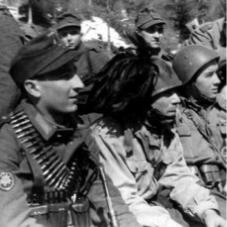 |
|
It is difficult to assess Axis losses as the available sources do not
provide any figures. The left and center columns casualties were most
likely negligible; the heaviest losses were those suffered by the (Italian)
right wing of the Axis array.
As for the 92nd Division, the relatively few prisoners taken by the Axis
indicate a headlong retreat, although some small units held out to the
last. On the other hand, routing an enemy division, surrounding the
remnants and bagging thousands of prisoners was a task beyond the very
limited capabilities of the Axis forces - few "leg" infantry battalions
crossing rugged mountain terrain, under the threat of the deadly Allied
air raids. During the American retreat instances of panic, feeble
resistance and utter disorganization actually took place, as Gallicano
civilians witnessed.
The responsibility for these episodes, as Gen. Mark Clark himself pointed
out, rests almost entirely with the high level commanders, not with the
92nd Division's black troops nor with the majority of their platoon,
company and battalion leaders. A night assault took them by surprise, they
did what they could do, and not rarely they fought valiantly; a number of
black soldiers were later awarded decorations. In the Italian and German
officers' opinion, the American black soldiers were not much aggressive,
but in defense they could be stubborn and tough. In several little local
attacks October through November, the "Buffalo soldier" troops had fought
fairly well.
Gen. Almond and Col. Sherman deserve criticism. Although they later tried
to blame it on the troops, the American setback was mainly caused by their
muddled orders, their slow reaction and some misunderstandings, as well as
the tactical surprise achieved by the Axis and the effectiveness of the
German assault troops. The inadequate leadership of several American
company and platoon commanders compounded 92nd Division's failure.
The Allies also underrated Monterosa Gothic Line troops' morale. A
mid-December US intelligence report stated that "the morale in the [Monterosa]
Division is very low". While the Italian unit was not a topnotch outfit,
and did have its morale troubles, it was far from being a total failure.
It also seems the Americans were unlucky. The blasting charges placed on
some important bridges in order to blow them up in case of a sudden Axis
attack did not explode. |
|
Maggiore CADELO Girolamo (1906-1944) |
|
The Tide On The Ebb |
|
nato a Trapani il 4 luglio 1906 e morto il 27 settembre 1944 in Liguria a Santo Stefano d'Aveto
.
Servizio al
Rgt. "Lancieri di Novara, 1942, al Gruppo esplorante 1° Ged
Bersaglieri della divisione alpina Monterosa. Decorazioni: Bronzo al V.M.
1944 Il gruppo esplorante “Cadelo”,
dipendente direttamente dal comando di divisione, era composto da
bersaglieri che portavano il fez rosso e avevano in dotazione la
bicicletta. Era formato da un reparto comando e da tre squadroni. Il
none “Cadelo” gli derivava dal nome del suo comandante, caduto in Liguria,
a Brizzolara di Borzonasca
(GE)
in un agguato partigiano. Dal
novembre 1944 resse il fronte nella zona Sassi-Eglio-Grottorotondo-Rocchette, collocandosi fra il Btg “Uccelli”
della San Marco e il Btg “Intra”. Dal dicembre ’44 all’aprile ’45 fu
comandato dal Ten.Col. Emanuele Andolfato. |
|
The success went to Mussolini's and Graziani's heads. They (and several
RSI military and political representatives as well) pressed for a
continuation of the offensive, by pouring reinforcements in and directing
the victorious columns southwards (Lucca), south-west (Viareggio) or
eastwards.
But it was the realm of fancy. December 27th to 30th, USAAF aircraft
strafed and bombed everything in sight. In the town of Camporgiano, even a
hospital wherein German, Italian and American wounded were being treated
was attacked by mistake. The few 20 mm and 88mm anti-aircraft guns could
not stop the waves of Allied planes.
Moreover, the 8th Indian Division (first a battalion and a company of the
19th and 21st Indian Brigades, then the whole units) was hurriedly rushed
to the Garfagnana front and was deployed north of Bagni di Lucca. Two US
85th Division Regimental Combat Teams quickly set up a front line again.
The 1,000 meters high Mount Palodina (4 km south of Gallicano) became an
impregnable Allied strongpoint.
In any event, the new Allied line was not tested: as previously decided,
the Wintergewitter commanders shut the offensive down and withdrew their
troops to more solid positions, just 1 - 2 km south of the December 26th
start lines. The withdrawal was completed by December 30th. 8th Indian
Division's bloodless advance simply followed on the Axis retreat and no
fighting took place. In his book "War in Italy - 1943-45. A Brutal Story",
p. 120, Richard Lamb states: "The crack British 8th Indian Division went
into the line to replace the 92nd and immediately counter-attacked.
Graziani's Italian troops were no match for fierce, battle-hardened
Gurkhas, and Barga was recaptured". In fact, the Gurkhas recaptured Barga
without a fight. The Germans and Italians had withdrawn and evacuated the
conquered territory. In a few patrol actions, 8th Indian Division
reportedly captured one German and two Italian soldiers. |
| Aftermath |
|
|
All of the limited objectives of the Garfagnana offensive were attained.
The US 5th Army got a minor beating. Allied reserves were shifted to a
secondary sector. The success cheered the Italian RSI troops up, though
just for a while. Some local Italian partisan bands and groups were
eventually scattered. The Axis gained a slightly better defensive
situation on the Western Appennines, and indeed, the new line stayed more
or less intact until April 1945 and the final Axis collapse.
Given the awful conditions under which the Axis units were operating in
the Italian theater, and the disproportionate numbers and firepower, it's
unthinkable they could achieve more than they historically did. Assuming
it was a realistic proposition, which is highly doubtful, an all-out,
Ardennes-style offensive, if successful, would probably have led to the
capture of Leghorn and pushed 5th Army further back, but it would never
have "driven the Allies into the sea". And an extra German effort in Italy
would just have quickened the collapse of the Western and Eastern fronts. |
|
L'offensiva scattò alle ore 0 del 26 Dicembre ed ebbe pieno successo: le
colonne avanzanti conquistarono Sommocolonia, Barga, Coreglia, Fornaci di
Barga, Promiana, Calomini e altri paesi fino alla sponda settentrionale
del torrente Turrite di Gallicano. Il nemico, costituito dalla 92a Div.
Buffalo USA, dopo aver aspramente combattuto, era in rotta e il comando
americano fu costretto a spostare sulle linee reparti della 8a Div. di
fanteria indiana e il 370° Regg. Fanteria USA con artiglieria, per
arrestare l'avanzata. Contemporaneamente il tempo migliorò e ciò' permise
un intervento massiccio dell'aviazione americana che effettuò continue
azioni di bombardamento e mitragliamento. Il comando tedesco decise quindi
di non proseguire l'offensiva e di formare una nuova linea difensiva più'
avanzata di quella di partenza. Le truppe italo-tedesche, oltre a
conquistare terreno e un notevole bottino di armi, materiali e viveri,
avevano creato una situazione di pericolo per la tranquillità di
rifornimenti che da Livorno affluivano alle linee americane a sud di
Bologna. Nel volume "The Mediterranean Theater of Operations-Cassino to
the Alps" pubblicato nel 1977 dal Center of Military History del USA ARMY
a Washington a pag. 410 si legge: "Il Generale Von Tippelskirch,
comandante della 14 Armata, non aveva dubbi sulla validità
dell'operazione. La breve offensiva, secondo la sua opinione, aveva
migliorato il morale delle truppe dando ai suoi uomini una necessaria
vittoria sugli Americani e le unità partecipanti avevano ricevuto un
notevole addestramento ed esperienza di combattimento. Ma più' importante
ancora la V Armata USA era stata costretta a ritirare truppe dal critico
settore a sud di Bologna per rinforzare il traballante settore della Valle
del Serchio. Ma il Gen. Von Tippelskirch sarebbe stato ancor più
compiaciuto se avesse saputo che l'operazione Wintergewitter aveva anche
creato tali incertezze nella V Armata al punto di contribuire a un quarto
rinvio, che poi si rivelò essere "definitivo, fino a primavera,
dell'attacco a "Bologna." |
 |